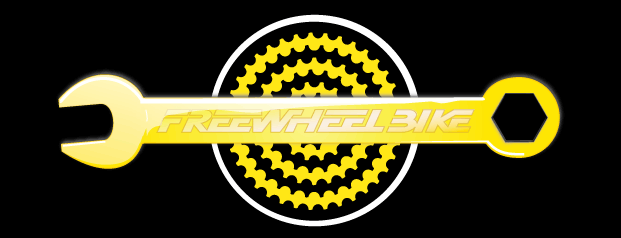Throughout these three days I was constantly reminded of a saying that goes something like, "If there's a way to do it wrong, someone will do it." I kept seeing things get put back together wrong and kept hearing the instructors warn us that if we don't do X then Y will happen. Y was always something bad, like "You will break this expensive carbon spoke." Or "The chain will fail during use."
In the Mavic class I saw a Carbone spoke re-installed using the wrong lacing pattern. I did see a new Mavic free hub design which looked much better than there old ones.

But the scariest thing was the R-Sys wheel design. You see, the spokes are a solid carbon rod. They don't flex or bend. So Mavic put a spoke retainer ring inside of the hub so that the spokes don't get pushed back into the hub under heavy loads. The only problem is that you can't true the wheel unless you remove the axle and take out this ring. Oh yeah, when you take out this ring you will probably ruin it so you'll want to make sure that you have a replacement ring before you start. The Mavic techs told us about someone that was not aware of this ring and broke a spoke while trying to true a wheel.
At the Shimano clinic we learned about OE chain pins and the power tool used to install them.
It looks like this.

Yep, that's a chain pin installation tool. It's used by bike manufacturer's to install chains on their bikes. It's much faster than the hand tools that we use. The problem that this presents is that they have to use a "special connecting pin" made specifically for manufacturer's, it's no the same as the "special connecting pin" that we are used to. That special chain pin cannot be installed correctly with a hand tool. But unfortunately some chains get shipped to shops and sold to customers with that OE chain pin part way installed. If we install it with our hand tools the chain is likely to break.
We serviced a Cane Creek Double Barrel air canister. It was super simple to do. But if you look at the schraeder valve it looks like it's pointed the wrong way. I asked if the air canister could be installed the other way. I was told that it was possible but that it air would leak out.

By the way, Can Creek has there SHIS together when it comes to headsets.
FSA seems to be all about bottom brackets and bottom bracket adaptors. But we noticed that one of their press fit bottom brackets can be installed backwards.

Notice that they put an arrow next to the L and the R. That's to make sure you press the correct side into the frame. FSA showed us how to fully disassemble their cartridge bearings for a complete service. They made us promise not to tell anyone else how to do it because they were afraid that someone would do it wrong and blame them.
In the Park Tool clinic Thad and I tapped a head tube. I'll give you a couple seconds to think about that one. One Mississippi, two Mississippi, three Mississippi.

Calvin told me that I could have the old frame after the summit was over so that I could try to tap the head tube. Thad must not have been paying attention because during the next lab section he started tapping the head tube. As Calvin walked by he was amused and somewhat disappointed because he still needed that frame for three more classes the next day. But again he got excited. The threads were perfect. He soon got to work trying to find a bottom bracket bearing that we could install that a fork would fit through. Of course FSA had a 30mm I.D. out board bottom bracket bearing. We spend the rest of the summit joking around about this new headset standard.
I've been a bike mechanic since 1996 and this is the first year that I have felt that parts manufacturer's have forgotten the saying, "If there is a way to do it wrong, someone will do it." So many of these wrong ways to install things could have been prevented with a little forethought. So just a heads up, make sure you read the instructions before you start working on something, even if it's a simple wheel true.
